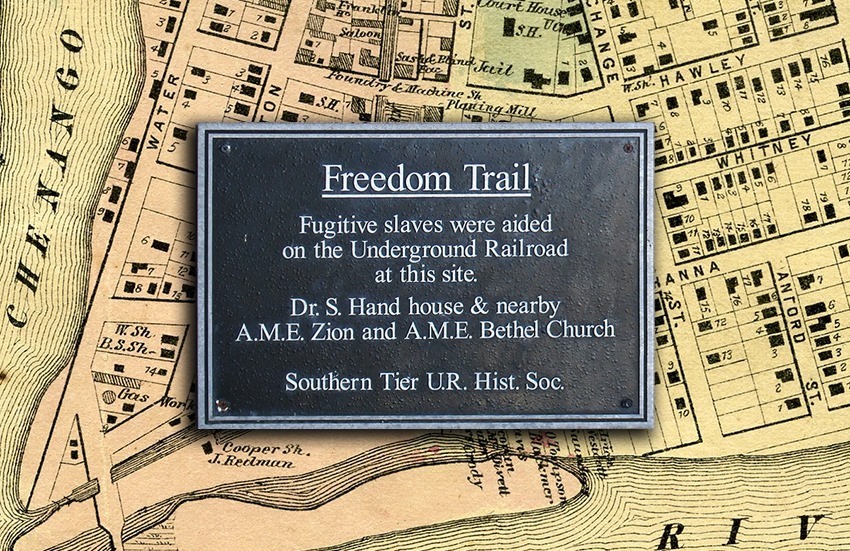On Feb. 17, the Broome County Historical Society presented “Follow the North Star: The Underground Railroads in the Southern Tier,’‘ a talk by Broome County Historian Gerald Smith. “Follow the North Star” gave a glimpse into what the Underground Railroad accomplished all over the East Coast, as well as specifically in the Southern Tier of Binghamton.
Contrary to what the name “Underground Railroad” implies, it was a series of routes and stations/safe-houses and churches. While escaping to freedom, enslaved people would follow the North Star, a sign that they were on the path to freedom. The Religious Society of Friends — commonly known as Quakers — were passionate abolitionists. Many of the main stations and routes jet off of Philadelphia, Pennsylvania where there was a high population of Quakers.
“They would follow the North Star,” Smith said. “A sort of guiding light to them, a sign of freedom,”
The Underground Railroad was illegal as per the 1850 Fugitive Slave Act. The act required enslaved people to be returned to their owners even if they made it into a free state. Additionally, the act made it the government’s responsibility to assist in tracking them down and made it illegal for anyone to help enslaved people escape by being fined by upwards of $1,000 — over $30,000 in today’s money — or even imprisoned. But, many people did not listen and were willing to do whatever it took to assist enslaved peoples’ journey to freedom.
“In the Compromise of 1850, the Fugitive Slave Act … was supposed to put the fear of God in [abolitionists] to not participate,” Smith said.
The route would then lead all the way up through the East Coast into Canada, where fugitive slaves would be deemed free.
Smith discussed Binghamton’s role as a major hub for the Underground Railroad, housing many conductors. The majority of the stations ran along railroads and rivers — and this is exactly what Binghamton had to offer. One of the first stops up from Philadelphia was Montrose, Pennsylvania. Judge Isaac Post was a head conductor in the area. Judge Post knew that his position of power protected him from jail time, which is why he so frequently took part in the Underground Railroad.
With Binghamton sitting so close to the Pennsylvania border, it was the next stop from Montrose. Today’s Government Plaza where Binghamton City Hall lies was on one of the biggest stations in the area, 42 Collier St. At the time it was home to Dr. Stephen Hand, a conductor for the Underground Railroad. He housed enslaved peoples and gave them directions to the next stop. In order to prevent slave catchers or law enforcement from raiding the safe houses, each conductor only knew one or two different routes. While Binghamton was home to many white abolitionists, it was also home to many free Black people. By 1838, Binghamton had two Black churches, with one of which is still standing to this day. Located right across from The Lost Dog Cafe & Lounge stands Trinity Memorial Church, originally named Zion Methodist Church. Reverend Jermain Loguen, the “King of the Underground Railroad,” known for saving over 1,100 enslaved people, preached at the church for two years.
It is unknown how many people came through Binghamton on their path to freedom, but nonetheless, the town played a role in fighting for the freedom and rights of all.



